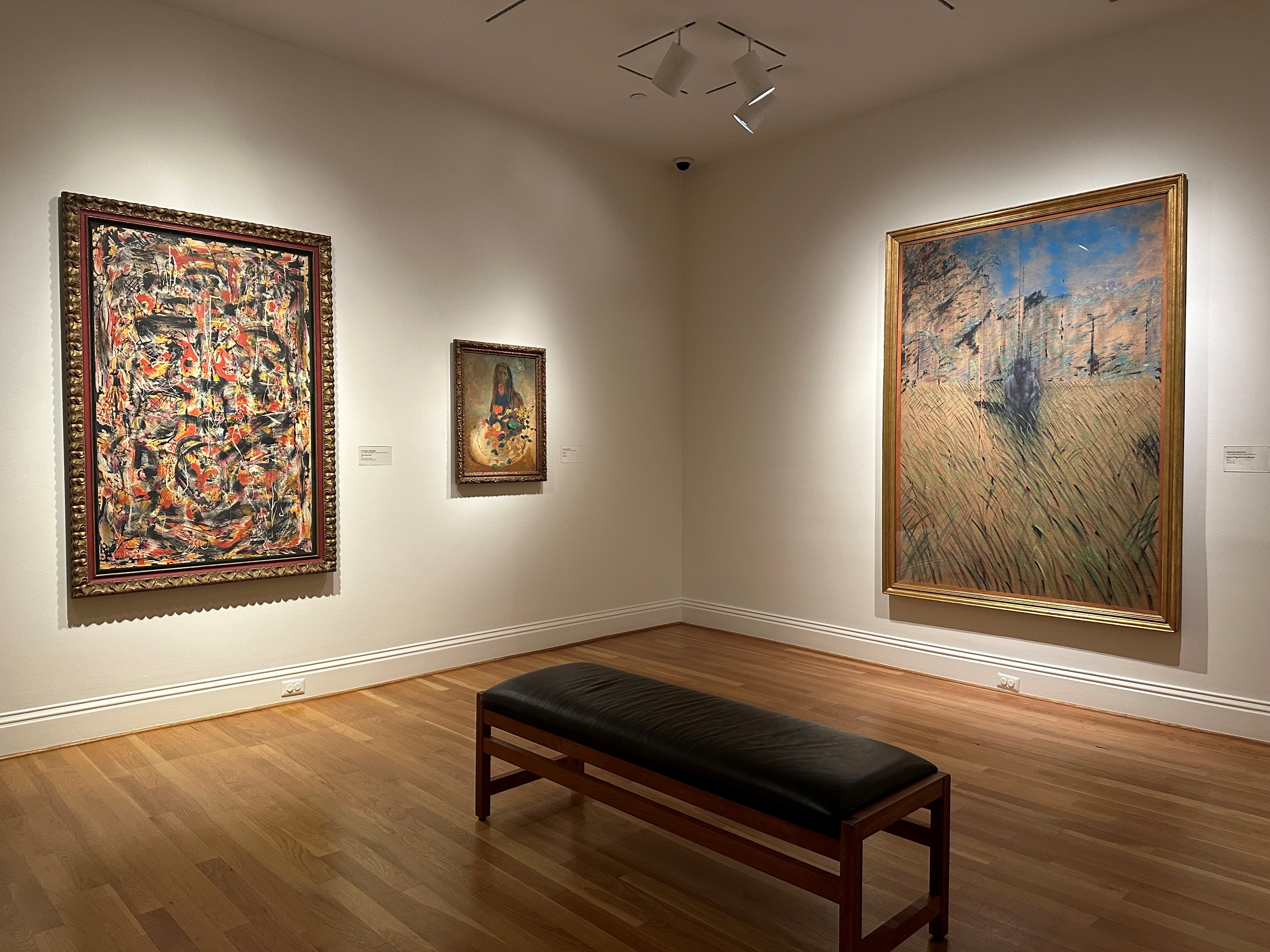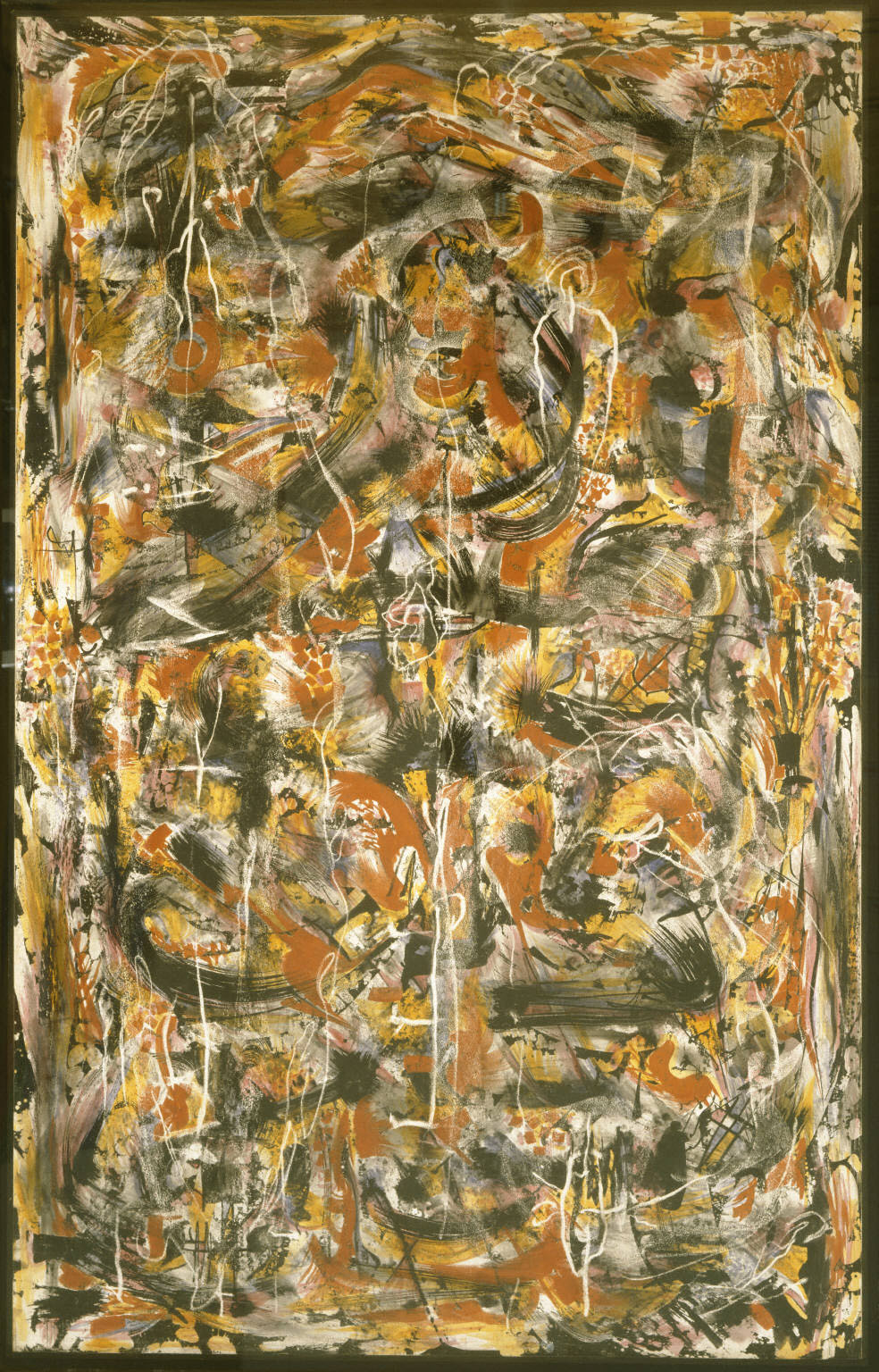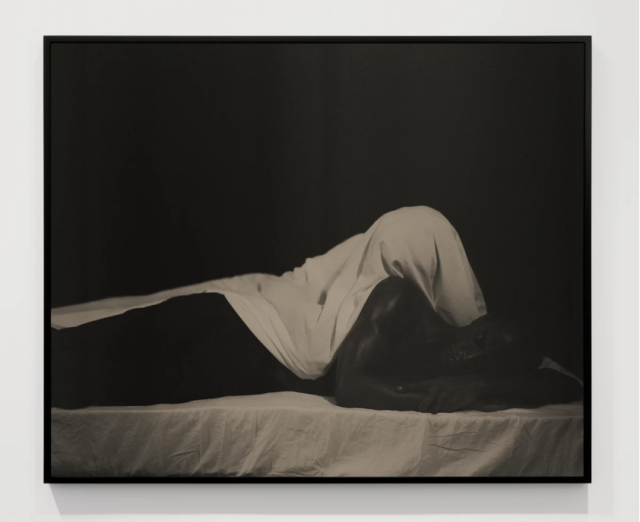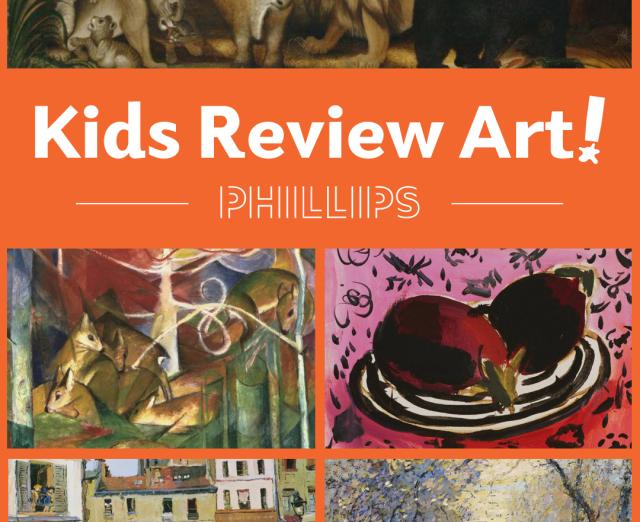Francis Bacon and Alfonso Ossorio Deep in Conversation
Collection
Phillips Educator Carla Freyvogel imagines a conversation between Francis Bacon’s Study of a Figure in a Landscape and Alfonso Ossorio’s Reforming Figure.
It is too bad that artists Francis Bacon (b. Dublin, 1909-1992) and Alfonso Ossorio (b. Manila, 1916-1990) did not cross paths. In my imagination, they get together to shoot the breeze on a spring day in New York City. The year, perhaps 1960. Bacon would have gruffly suggested McSorley’s on the Lower East Side for a beer and a shot, while Ossorio would have reserved the best table at The Plaza’s Palm Court and ordered a sloe gin fizz. But wherever they landed, they would have had lots to talk about.
Imaginary cocktails aside, they are in conversation right now at The Phillips Collection in the second floor galleries. The conversation is rich.

Study of Figure in a Landscape commands the primary view. A figure, painted in smudged black, sits in an empty field, high in the picture frame. It bisects a horizon line that separates a field from an anemic forest. In contrast to the smearing of the figure, the rest of the paint application is deft; the brushwork so intermittent that much of the brown canvas is evident. The mood is quiet, somber, solitary, and reflective. Across the gallery, Ossorio’s Reforming Figure jumps with life. It has the energy that Abstract Expressionism nurtured; ink, watercolor, and wax applied with looseness and abandon. Looping through this bedlam are some almost recognizable shapes. The verticality of Ossorio’s composition, the dominance of red, and the waxy white lines indicating figures in a state of devotion create an impression of enthusiastic Christian worship. What are they talking about, those figures in Reforming Figure and Study of Figure in a Landscape?

After acknowledging their shared year of creation (1952), Reforming Figure asks Bacon’s figure to raise his heavy head: he could find companionship if he would embrace religious faith and have some fun at the same time. Ossorio’s painting makes a case for the zeal of the spiritual world, especially when the physical world offers as little as Bacon’s landscape. Perhaps the paintings would argue about the pros and cons of centralized compositions with Bacon’s figure holding fast to academic rules while Ossorio throws caution to the wind.
Beyond the visual connections of Bacon’s scratchy canvas and Ossorio’s active image, the conversations continue. Both artists’ experiences as gay men coming up in an age of intolerance create the foundation for what we see. Each explored religious themes in his work, either with habitual devotion or rabid opposition. Ossorio leaned into his Catholicism as if to defy the church’s judgement of his personal life. In addition to Reforming Figure, much of his other work from the early 1950’s brings to mind church altars and stained glass windows. He was working on a mural for the Roman Catholic Chapel of St. Joseph the Worker in Victoria, on the Philippine island of Negros between 1949 and 1950, just prior to painting our work. Bacon, an Anglican in his tortured childhood, became an outspoken agnostic as an adult. He must have been channeling his angst with ferocious artistic attempts to deface (literally) the portraits of Popes, cardinals, and other church authorities.

Each artist had roots in surrealism. For Bacon, it became a lifelong association. Ossorio’s works from the ‘40s show embellished Christian themes with grotesque and exaggerated detail, though he did leave this approach behind by the time he painted Reforming Figure. Both artists had a scientific interest in the human body and an ability to translate that interest into visual expression. After becoming an American citizen in 1933, Ossorio served as a medical illustrator in the United States Army during World War II. Bacon revered and collected the work of Eadweard Muybridge. In fact Study of Figure in a Landscape was directly inspired by a photograph from Muybridge’s Human Figure in Motion (c. 1885).
I like to think that Alfonso Ossorio might have offered comfort to Francis Bacon. It seems Ossorio was a warm, generous soul. His substantial inherited wealth buffered his experience as a gay man, allowing him to live his life without apology. He remained connected to much of his family. His partner, Ted Dragon, was an integral part of both Ossorio’s artistic and social life. After Ossorio died in 1978, Ted carried the torch for his memory and oeuvre.
In celebrating Pride Month, let’s have some of the warmth and security of Alfonso Ossorio’s life shine down on Francis Bacon. Perhaps his Study of Figure in a Landscape might not be so alone.




